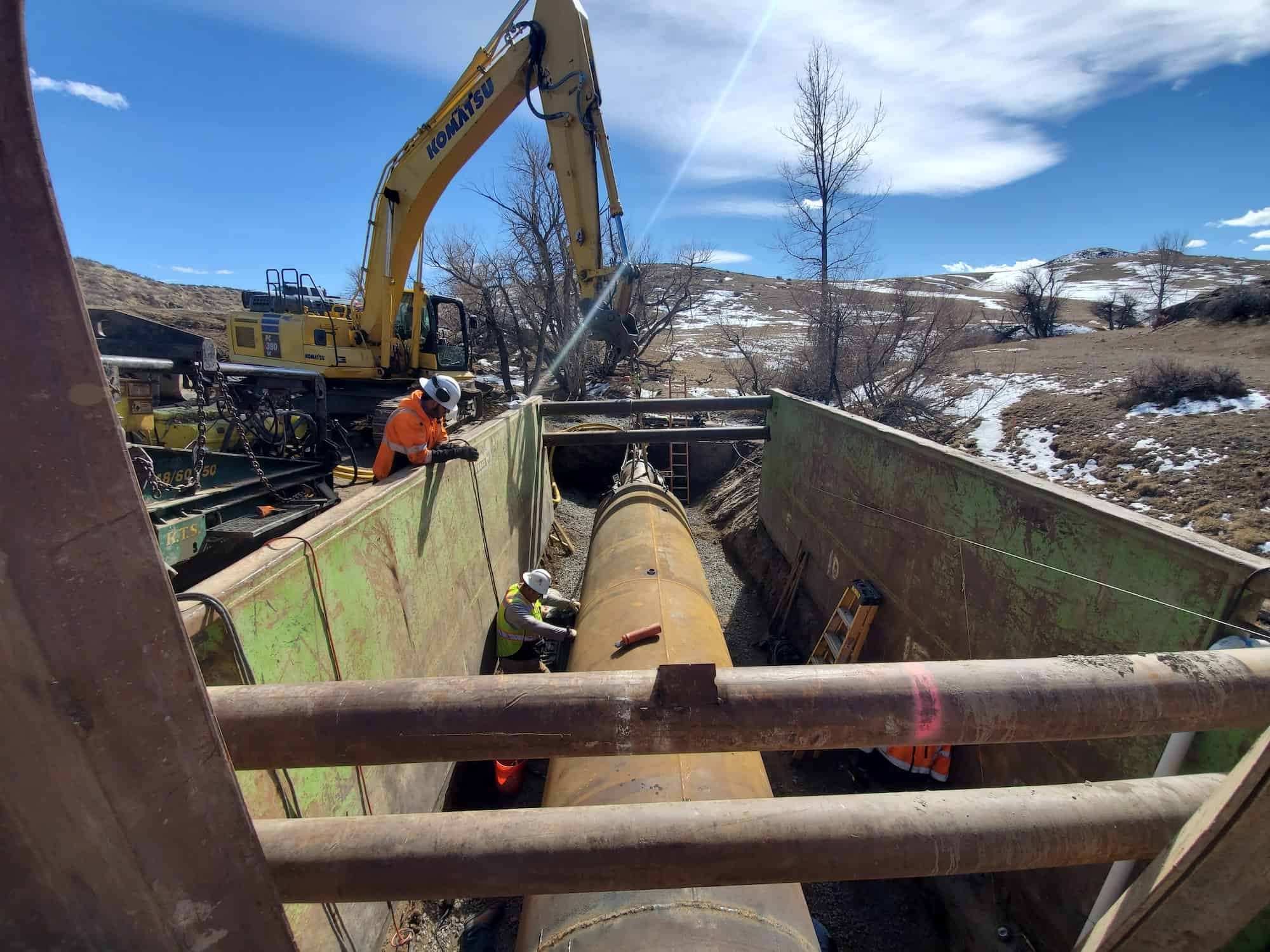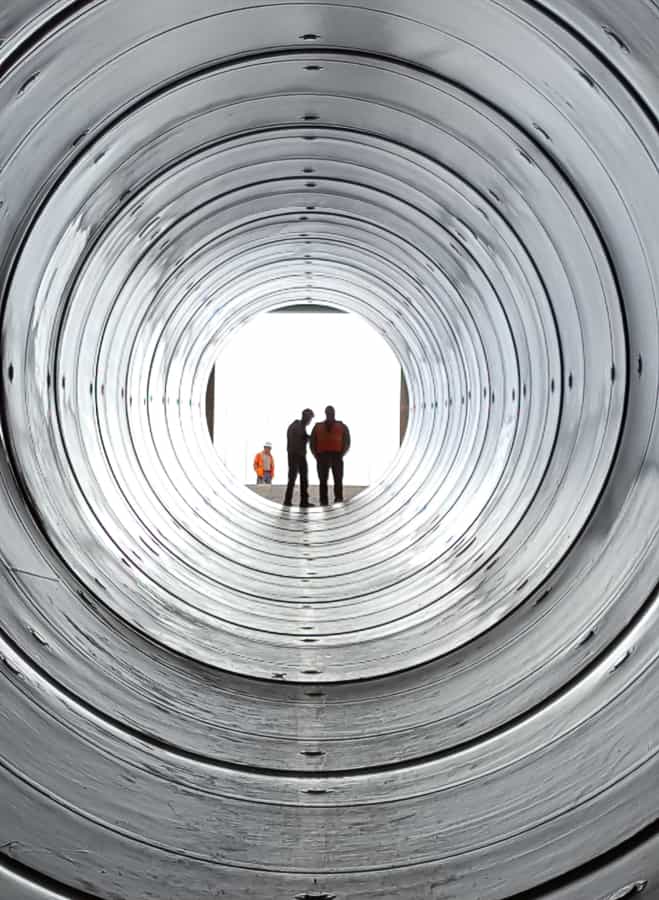Services
OUR METHODS
While there are multiple methods of installing pipe, conduit or other conveyance infrastructure without opening a trench and disturbing the surface, each has a unique approach and can be dictated by a number of variables including ground conditions, surrounding infrastructure, desired impact, depth and diameter, cost, complexity and project duration or scheduling.
Below is a brief overview of the methods we employ at UIT to deliver a trenchless installation for our clients.
Guided and Unguided Auger Boring
Auger Boring utilizes a jacking machine to advance casing along the tunnel alignment while simultaneously using an auger to remove spoils along the way. It is a well-established and reliable trenchless installation method, useful in situations with soft ground conditions. Typical diameters range from 20 to 60 inches, with boring lengths of up to 400-500 feet. Longer lengths are rare due to the large friction and jacking forces required at 400-500 feet. Utilizing Guided Auger Boring, adjustments can be made along the way, thus increasing the accuracy of the bore and allowing for completion of longer lengths. Because of the simplicity and reliability of the method, it is usually among the most cost-effective options.
Pipe Ramming
Pipe Ramming involves forcing specially designed steel or direct- jack pipe through the earth on relatively short runs in a variety of soil conditions, with the exception of solid rock. The open-faced pipe is pushed through the earth using a pneumatic hammer, while spoils are excavated typically with an auger. A soil plug is typically maintained at the face, ensuring that there is no surface ground loss.
Generally speaking, unguided ramming methods are less steerable than other options, and are therefore useful in short run applications. However, utilizing a pilot tube steering system with the installation of intermediate casings if required, can enable longer and more accurate runs.
Hand Tunneling
sounds like: excavating soil with the use of hand tools and personnel inside a tunnel shield attached to the casing or pipe as it is jacked forward through the tunnel alignment. A tunnel shield is utilized to protect the team members that are working at the face of the tunnel. Hand tunneling is often used in places where unknown objects or large boulders can be expected. It allows for easy access, view, and removal of any obstructions in the tunnel alignment. Most hand tunnels are 48 inches in diameter and larger.
There are situations where mechanized spoils removal is possible and, in larger diameter scenarios, a small mechanical excavator can be used if it can fit safely into the tunnel shield. Hand Tunneling is particularly useful in situations where there may be extensive underground infrastructure, such as maneuvering underneath or over other critical utilities that must be carefully avoided.
Sliplining
The process of sliplining involves pulling or pushing a new pipe inside of an existing pipe or structure in order to improve the existing tunnel and extend its lifespan. Following slipline pipe installation, most applications involve grouting the annular space between the new pipe and old pipes The slipline pipe will have a smaller diameter than the previous host pipe, and therefore can affect flow rates, which must be taken into account. There are two primary methods of Sliplining: “continuous” and “segmented”. UIT specializes in large-diameter and segmented slipline projects where individual pieces of the new pipe are installed inside the original host pipe.
Tunnel Rehabilitation
When it comes to repairing and rehabilitating critical infrastructure, some of which has been in place over a century, UIT brings a variety of methods and skills to the table. Whether it is sliplining an existing culvert or sewer conveyance, using liner plate to rehab a stormwater tunnel, or scopes involving geotechnical ground improvement techniques, our teams have performed it all. It is very important to understand the design, construction and any obvious failures or maintenance problems to determine the best strategy but regardless, UIT has the skill and experience to deliver a superior final result. We take into account the existing conditions, performance requirements, material limitations, constructability options, desired service life and the economics when performing our work, and always collaborate fully with owners, engineers and designers.
EXPLORE OUR WORK
With completed projects ranging from $50,000 to over $10 Million in size, our team has the experience to do it all.






